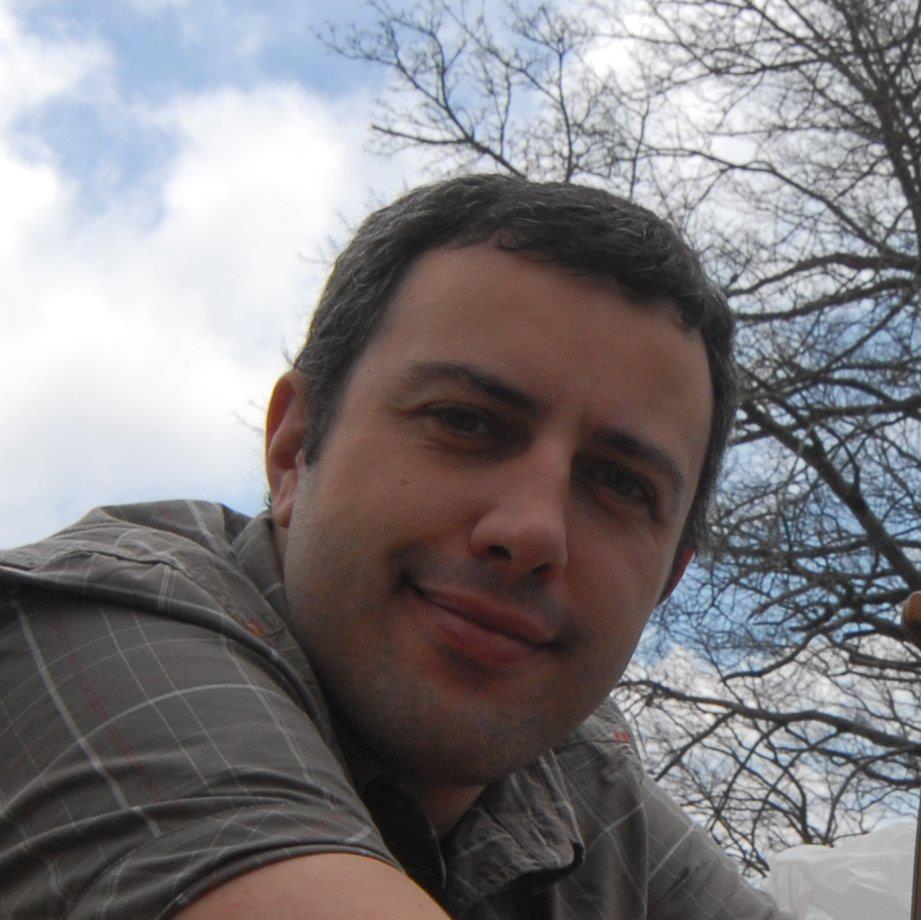The growth of firms and countries
Table of Contents
The project The growth of firms and countries: distributional properties and economic determinants which started in October 2012 is financed by the Italian Ministry of University and Research as part of the PRIN 2009 program (grant protocol number 2009H8WPX5).
Proposal
This project studies the distributional properties of economic growth, at the level of firms, sectors or entire economies, in a broader perspective than the one typically adopted in economic studies. We will do that through the development of statistical tools, empirical investigations and a coordinated, phenomenologically-driven, theorizing effort.
The traditional analysis of economic growth, and its relation with the diverse aspects of the economic system, is based on measures of central tendency, that is "averages". We are used to compare the competitiveness of sectors or countries by looking at their differences in average growth rates, or to asses the effect of a given policy by looking at its impact on aggregate productivity, defined as the weighted mean of the productivity of single units.
Conversely, a better description of the growth dynamics characterizing the economic systems, and a clearer investigation of the relationships existing between the diverse aspects of this growth process, can be achieved by looking at the properties of the entire distribution.
From a theoretical point of view, our approach replaces the traditional notion of economic equilibrium, seen as an optimal outcome deriving from more or less decentralized planning activities, with the notion of statistical equilibrium, generated by the interaction among many agents. In this approach the observed distributional heterogeneity is not merely considered as the result of a noisy environment, but as an emerging phenomenon, whose properties can be fruitfully investigated to infer the mechanisms of the underlying economic dynamics which, in turn, provide precise constraints to the possible modeling efforts.
The main challenge ahead is to move from the traditional investigation of unconditional "stylized facts", toward a more structured approach allowing to identify the determinants of the observed empirical regularities. Econometric models must be appropriately designed to this purpose, and descriptive investigations have to be replaced with precise hypothesis and reliable validation tools. The observed regularities, once appropriately described, will shape the boundaries for the formulation of models, which are indeed constrained to both incorporate and be able to reproduce them.
Inside this broadly defined research agenda, the project is built along three main activities, intended to exploit the interdisciplinary nature of the project.
The first activity concerns the investigation of the statistical properties of growth rates, both from a micro (firms) and a macro perspective (sectors and countries). We will focus on distributional aspects, like the presence of fat-tails, asymmetries and multi-modality. The interdisciplinary background of the unit members will provide the necessary skills to go beyond the technical toolkit typically employed in economics, allowing for an intensive use of existing non-linear and non-parametric methods, and also enabling us to derive new estimators suited for distributional analysis.
The second activity concerns the identification of the determinants of the observed distributional properties. At the macroeconomic level, the aim is to study the determinants of the entire growth distribution, across countries and across regions, extending the still limited body of literature which merely look at aggregate volatility. From a micro perspective we will investigate the possible determinants of long and short run industrial performances, respectively captured by the size of the firm and its growth rate. Traditional studies look at the unconditional distribution of these variables. However, industrial evolution is essentially a matter of economic selection on firms' characteristics and performance. Thus, we will explore how growth relates with the availability and cost of capital, with technical productivity and operating profitability, the latter being the natural fitness measure on the competitive landscape.
Finally, these empirical efforts will be exploited in the third line of activity, which concerns the formulation of new models of growth. The goal is to enhance the economic content of existing models, including aspects related to structural relationships among firm performances, financing problems, and policy regimes affecting selection and competition dynamics. The modeling effort is based on the analytical tools developed by the units, sharing the common purpose to design suitable stochastic models for both discrete and continuous time dynamics.
A final key ingredient of the project is the availability of large and rich datasets. These meet the intensive data requirements of the methods which we plan to apply and also allow to pursue international comparisons of the observed statistical regularities.
You can read the entire original proposal.
News
Project final meeting
See the event's page.
Project second mid-term meeting
The third meeting of the project was organized by the unit of Universita' del Piemonte Orientale, and took place in Alessandria. The program is available here.
Project mid-term meeting [2012-12-4 Tue]
The second meeting of the project was organized by the Sant'Anna unit in Pisa. The program is available here.
Some presenters agreed to have their presentations published on the web:
- Power Laws and the Firm Size Distribution by Giulio Bottazzi, Davide Pirino and Federico Tamagni
- The Estimate of Countries’ Growth Volatility via Conditional Density by Davide Fiaschi and Angela Parenti
- Measuring the degree of interconnectedness between European regional income by Davide Fiaschi and Angela Parenti
- The Determinants of Growth Volatility in European Regions by Davide Fiaschi, Lisa Gianmoena and Angela Parenti
Project kick-off meeting
The fist meeting of the project took place in Pisa, at Sant'Anna School the 27th and 28th of October. The program is available here.
<table style="width:auto;">
<tr><td>
<a href="https://picasaweb.google.com/lh/photo/svq4ilOepDiyvWoWe3k2YtMTjNZETYmyPJy0liipFm0?feat=embedwebsite"><img src=" " height="300" width="400" /></a></td></tr><tr><td style="font-family:arial,sans-serif; font-size:11px; text-align:right">From <a href="https://picasaweb.google.com/giulio.bottazzi/Website?authuser=0&feat=embedwebsite">Website</a>
</td></tr>
</table>
" height="300" width="400" /></a></td></tr><tr><td style="font-family:arial,sans-serif; font-size:11px; text-align:right">From <a href="https://picasaweb.google.com/giulio.bottazzi/Website?authuser=0&feat=embedwebsite">Website</a>
</td></tr>
</table>
People

Figure 1: Giulio Bottazzi

Figure 2: Irene Brunetti

Figure 3: Pietro Dindo

Figure 4: Marco Duenas

Figure 5: Davide Fiaschi
Figure 6: Lisa Gianmoena

Figure 7: Guido Germano

Figure 8: Angela Parenti

Figure 9: Tijana Radivojevic

Figure 10: Fabio Rapallo

Figure 11: Enrico Scalas

Figure 12: Angelo Secchi

Figure 13: Federico Tamagni
<br style="clear:both;" />
Deliverables
The success of the project is measured in terms of the scientific output it is able to produce. Here we list the deliverables otiginally promised in the proposal, classified according to the three main objectives, indicating the responsible unit and the deadline for delivery. Variations with respect to the original proposal are noted where necessary.
Objective 1: Refinement and extension of statistical methods
Extension of sofware package (Sant'Anna): We have extended the gbutils including maximum likelihood estimation of tail behaviour (gbhill). We have extended the subbotools software packages to include maximum likelihood estimation of Asymmetric Power Exponential (AEP) distribution (subboafit). Instead of the porting to Matlab/Octave we preferred to produce self-installing .deb packages to facilitate the software installation on Linux machines. The packages are publicly available free of charge in the software home page.
Two econometric papers on extreme events and tails behaviour (Sant'Anna): The working paper by G. Bottazzi and A. Secchi is about a quantile regression aanalysis of the effect of financial constraints on firm growth. The working paper by G. Bottazzi D. Pirino and F. Tamagni is about the tail behaviour estimation.
Software for dealing with finitary models and continuous-time random walks (University of Piemonte Orientale): a collection of R and Matlab/Octave routines by D. Aringhieri, T. Radivojevic and E. Scalas. See here.
A theoretical paper concerning complex models for contingency table analysis (University of Piemonte Orientale): by Kuhnt, S., Rapallo, F. and Rehage, "Outlier Detection in Contingency Tables based on Minimal Patterns", Statistics and Computing. Available here.
Objective 2: Empirical analysis of growth distributions
An empirical paper which explores the relationship between properties of firm growth and selection dynamics operating over productivity and profitability performance of firms (Scuola Sant'Anna): the paper we had in mind was already published before the beginning of the project. Further work led to the following paper: "Dynamics of Productivity and Cost of Labour in Italian manufacturing firms" by G. Bottazzi and M. Grazzi, Bulletin of Economic Research, DOI
An empirical paper on aggregate output volatility of countries (Scuola Sant'Anna): The working paper by G. Bottazzi and M. Duenas is ready and submitted to an international journal. This deliverable was originally assigned to University of Pisa.
An empirical paper on financial constraints and firm growth (Scuola Sant'Anna): The paper by G. Bottazzi, A. Secchi and F. Tamagni is due to appear in Small Business Economics.
An empirical paper on output volatility at the regional level (University of Pisa): Two papers will be delivered instead of the original promised one: "The Determinants of Growth Rate Volatility" by D. Fiaschi, L. Gianmoena, A. Parenti Discussion Papers del Dipartimento di Economia e Management – University of Pisa, n. 170 and "An Estimate of the Degree of Interconnectedness between European Regions: A Bayesian Model Averaging Approach" by D. Fiaschi and A. Parenti Discussion Papers del Dipartimento di Economia e Management – University of Pisa, n. 171
Contingency table analysis for the identification of firm growth dynamics (University of Piemonte Orientale): this paper is prepared in collaboration with the unit at Scuola Sant'Anna, that is also responsible of providing data, and will focus on the detection of outliers at firm level. This paper substitute the deliverable titled "A theoretical paper exploiting finitary models on the effects of policy regimes switching on firm growth and industrial dynamics" in Objective 3.
Objective 3: Formulation of new theoretical models
A methodological paper on the role and relevance of statistical equilibrium in economics (University of Piemonte Orientale): Scalas forthcoming.
A theoretical paper exploiting finitary models for modelization of aggregate wealth distribution (University of Piemonte Orientale): "Wealth distribution and the Lorenz curve: A Finitary approach" by Scalas, Radivojevic and Garibaldi is available here.
*A theoretical paper presenting a new stochastic model of firm growth, accounting for selection and financial conditions (Universita' di Pisa)*: "The Interrupted Power Law and The Size of Shadow Banking" by D. Fiaschi, I. Kondor and M. Marsili Discussion Papers del Dipartimento di Economia e Management – University of Pisa, n. 166]]. This deliverable was originally assigned to Scuola Sant'Anna.
A theoretical paper exploiting finitary models on the effects of policy regimes switching on firm growth and industrial dynamics (University of Piemonte Orientale): this deliverable has been replaced by a paper in Ojective 2
A theoretical paper exploiting continuous time random walks to model the effects of competition enhancing polices on distributional properties of industrial dynamics (University of Piemonte Orientale): S. Alfarano, G. Livan, M. Milaković and E. Scalas "Profitability and financial returns: A correlation perspective".
Further results
The research activity of the project contributed to a special issue published on "Structural Change and Economic Dynamics". The issue is presented in the editorial paper "Productivity, profitability and growth: the empirics of firm dynamics" by G. Bottazzi and A. Secchi, Volume 23, Issue 4, pp. 325–328, December 2012. D